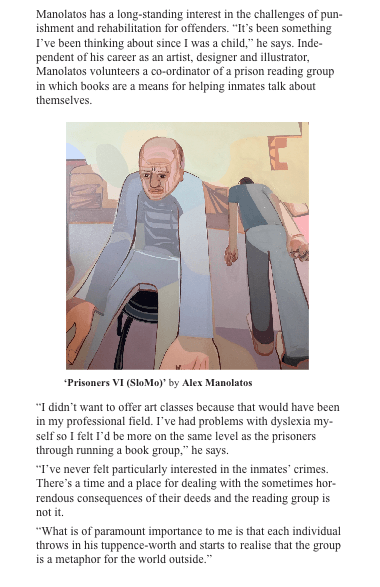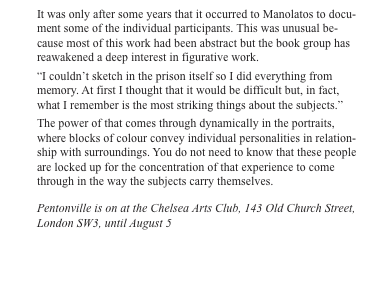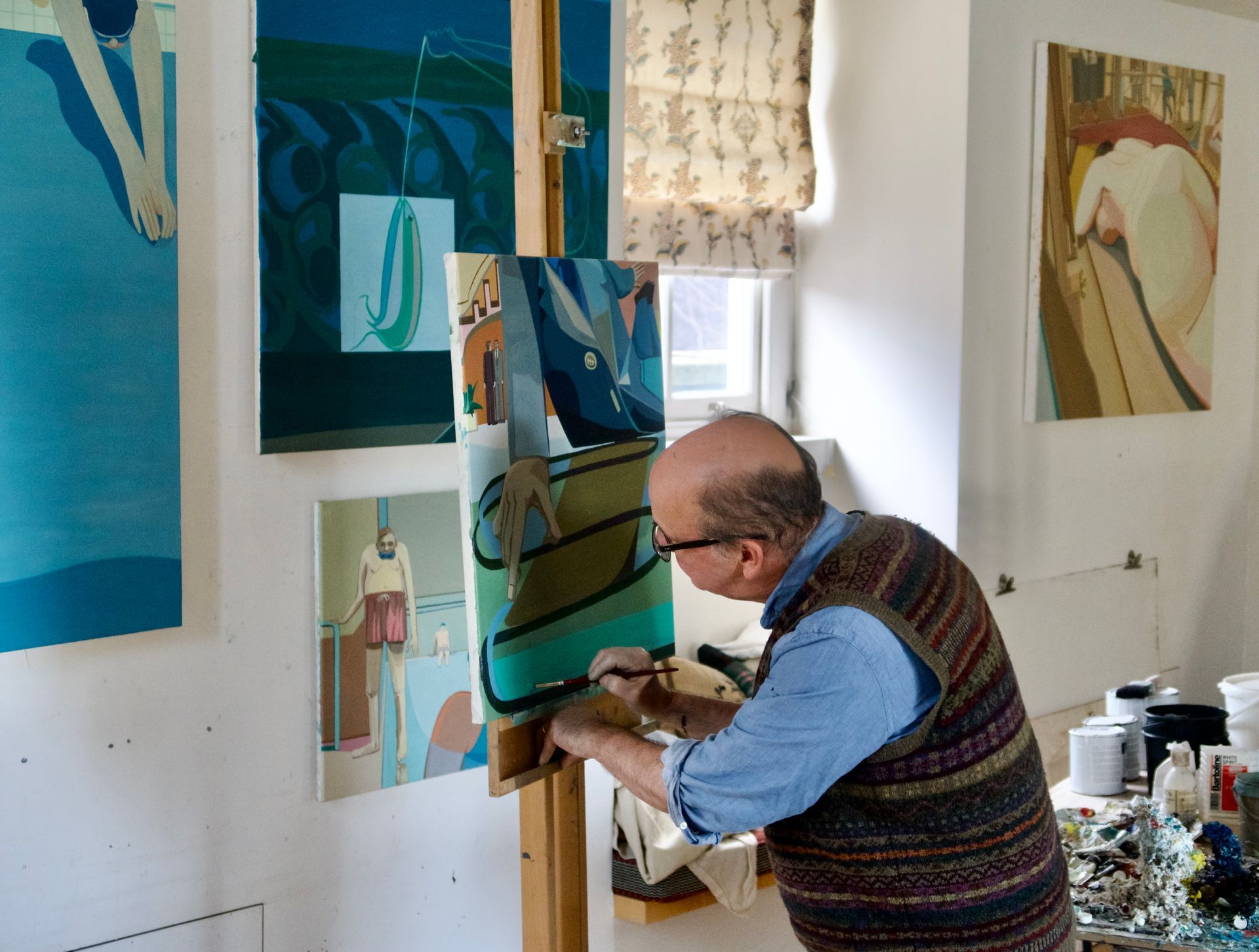
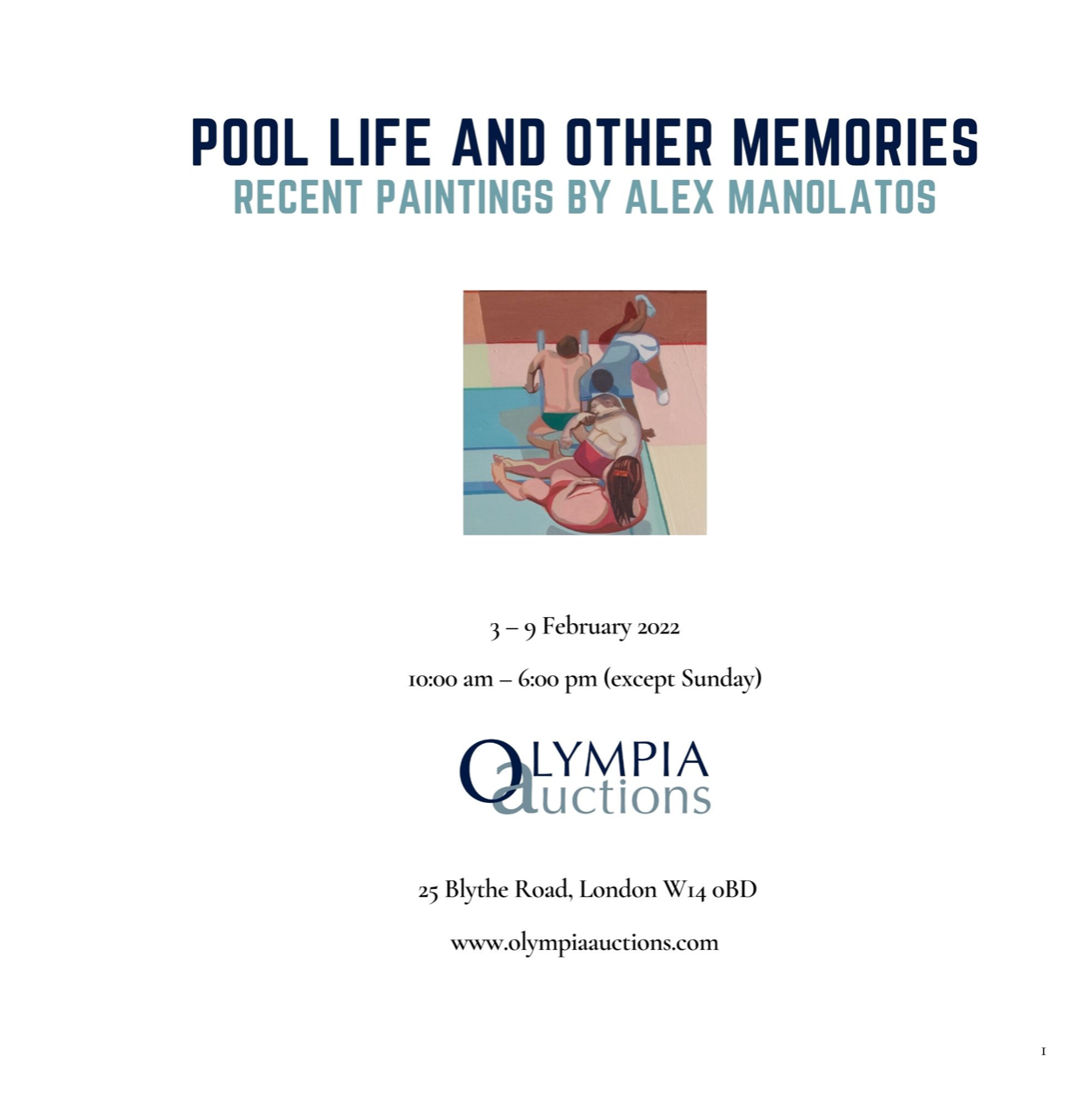
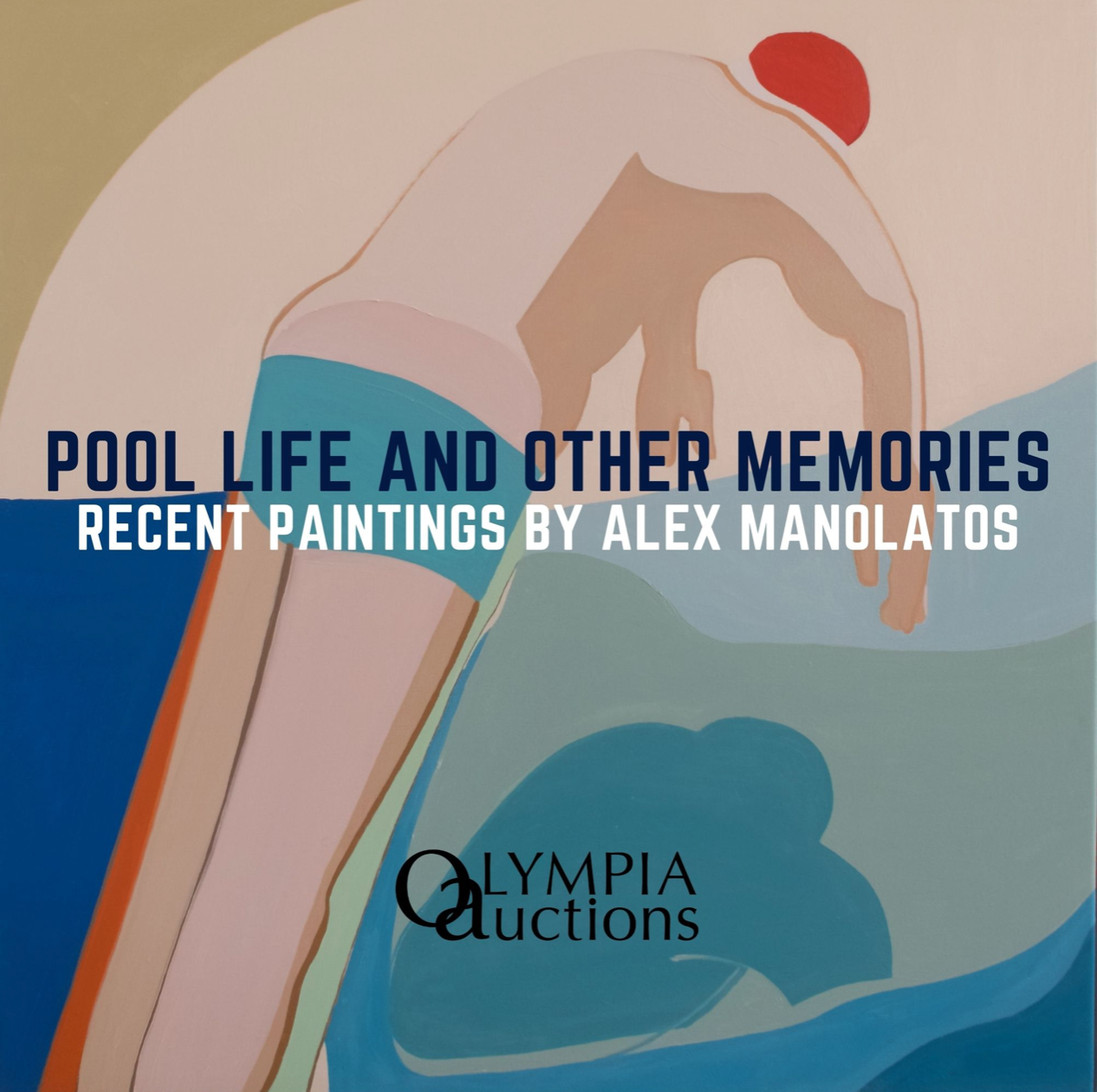
POOL LIFE AND OTHER MEMORIES – Exhibition, London, 2023
In March 2020 when we were all told to stay at home because of the Covid pandemic, I imagined that our lives would change dramatically and wondered how on earth we were going to combat the inevitable monotony of isolation. The internet came to our rescue to some degree, sorting out much of our evenings' entertainment. In my work life, I found delving into memories of my childhood for inspiration took on a new and more important meaning, allowing me to feel grounded at this time of crisis.
Getting out there and participating in 'normal' life became a yearning during the lockdown years. I imagined myself back to swimming in my local pool with its echoing architecture and particularly stark lighting. lt seemed the perfect setting to explore an old preoccupation of mine: the relationship and interaction between people in a public space. A friend of mine calls it 'municipal angst', which sums it up well.
Geraniums have always reminded me of home – Greece. They take me back to stiflingly hot courtyards, neat rows of freshly-watered pots carrying the knotty-stemmed plants with their starkly bright colours infusing an earthy scent into the still air.
Foreword by Emma Bridgewater
Alex Manolatos is an unassuming yet accomplished painter - I am drawn towards his bold graphic treatment and beautiful colours, but even as I approach the first of these Pool Life paintings, my first dawning of easy pleasure is arrested by a small shock of something much more poignant and personal within his compositions.
A little time and a closer look at his work reveal to me a sense of an artist dedicated to his quiet journey of discovery about the pain and the courage we all need to find to face the world. Where better to observe humanity as we tackle this challenge, than in a municipal swimming pool, where all our secret yearning to be sleek and fit meets the reality of timidity and plumpness? The result is in comfortable and companionable contrast to the dazzle of Hockney’s Bigger Splash- instead we have here A Cautious Paddle in an Indoor Pool, in the company of a quiet but penetratingly compassionate painter.
These pool paintings work for me as a revealing key to the paintings he describes as Memories. Still in the pleasing bright palette of the Pool paintings, these works hold a sensitive burden of contained confusion about childhood which is impossible to ignore but still gentle, and characterised by the same humane compassion and acceptance - of life just as it is - that suffuses all the work of this gentle artist.
Emma Bridgewater is a British ceramic designer, author and journalist, and founder of Emma Bridgewater Ltd.

